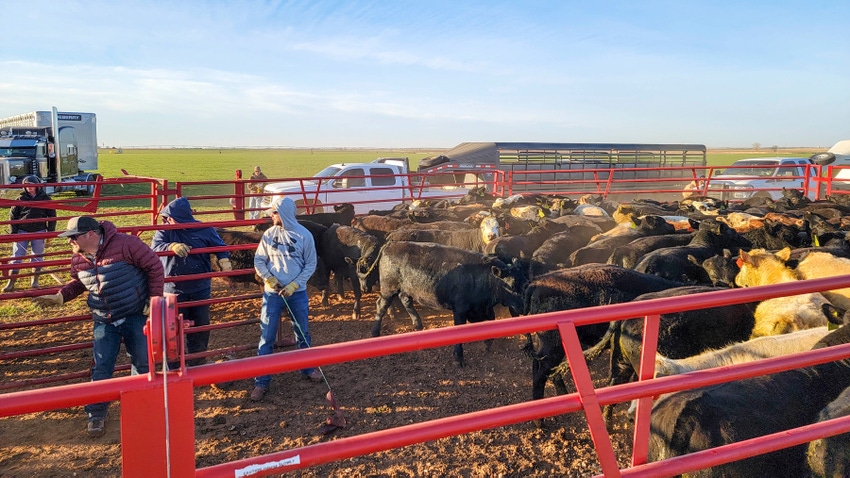Opening Development Prospective: Bagley Risk Management Approaches
Opening Development Prospective: Bagley Risk Management Approaches
Blog Article
Recognizing Animals Danger Security (LRP) Insurance Policy: A Comprehensive Overview
Navigating the world of livestock danger protection (LRP) insurance policy can be a complicated venture for lots of in the farming sector. From how LRP insurance policy operates to the numerous protection alternatives offered, there is much to discover in this comprehensive guide that might possibly shape the way livestock producers approach danger monitoring in their organizations.

Exactly How LRP Insurance Works
Periodically, understanding the technicians of Animals Threat Defense (LRP) insurance policy can be complicated, however breaking down just how it functions can provide clearness for breeders and farmers. LRP insurance is a danger administration device designed to shield livestock manufacturers versus unexpected rate declines. The policy enables producers to establish an insurance coverage degree based on their certain requirements, picking the number of head, weight range, and coverage cost. As soon as the policy remains in place, if market value fall below the protection rate, producers can sue for the difference. It's vital to keep in mind that LRP insurance coverage is not a profits guarantee; rather, it focuses only on cost threat protection. The protection period normally varies from 13 to 52 weeks, providing flexibility for producers to pick a duration that aligns with their manufacturing cycle. By utilizing LRP insurance policy, farmers and ranchers can minimize the financial dangers linked with changing market prices, making sure better stability in their operations.
Eligibility and Protection Options

When it involves protection alternatives, LRP insurance uses producers the adaptability to choose the insurance coverage level, protection duration, and endorsements that ideal fit their threat management demands. Coverage levels commonly range from 70% to 100% of the anticipated finishing value of the insured animals. Manufacturers can also pick protection periods that straighten with their manufacturing cycle, whether they are guaranteeing feeder cattle, fed cattle, swine, or lamb. Endorsements such as price risk security can better personalize insurance coverage to protect versus unfavorable market changes. By recognizing the eligibility standards and insurance coverage alternatives available, livestock manufacturers can make informed decisions to take care of risk efficiently.
Advantages And Disadvantages of LRP Insurance Coverage
When examining Livestock Danger Defense (LRP) insurance, it is vital for livestock producers to weigh the benefits and disadvantages integral in this risk management device.

One of the key benefits of LRP insurance is its ability to supply protection against a decline in animals costs. In addition, LRP insurance provides a degree of flexibility, allowing producers to customize protection degrees and policy periods to match their details needs.
Nevertheless, there are additionally some downsides to take into consideration. One limitation of LRP insurance coverage is that it does not secure versus all kinds of dangers, such as illness break outs or all-natural catastrophes. Costs can occasionally be pricey, especially for manufacturers with big livestock herds. It is essential for producers to very carefully examine their individual risk direct exposure and financial circumstance to identify if LRP insurance coverage is the best threat management device for their operation.
Comprehending LRP Insurance Coverage Premiums

Tips for Maximizing LRP Perks
Making the most of the advantages of Animals Risk Security (LRP) insurance coverage requires calculated preparation and aggressive threat monitoring - Bagley Risk Management. To take advantage of your LRP insurance coverage, take into consideration the complying with tips:
Regularly Evaluate Market Problems: Keep educated concerning market patterns and rate fluctuations in the livestock market. By keeping track of these elements, you can make educated decisions concerning when to acquire LRP coverage to protect versus prospective losses.
Set Realistic Protection Degrees: When picking insurance coverage degrees, consider your manufacturing costs, market value of livestock, and potential threats - Bagley Risk Management. Establishing practical insurance coverage degrees makes sure that you are sufficiently shielded without paying too much for unneeded insurance policy
Expand Your Insurance Coverage: Rather than relying entirely on LRP insurance, take into consideration expanding your danger administration techniques. Combining LRP with various other threat administration devices such as futures contracts or options can give detailed coverage against market uncertainties.
Review and Readjust Insurance Coverage Regularly: As market conditions transform, occasionally evaluate your LRP protection to ensure it straightens with your present risk exposure. Adjusting insurance coverage levels and timing of purchases can aid enhance your risk defense approach. By adhering to these ideas, you can maximize the benefits of LRP insurance policy and secure your animals operation against unforeseen threats.
Final Thought
Finally, livestock threat protection (LRP) insurance policy is a valuable device for farmers to manage the monetary threats linked with their livestock operations. By recognizing exactly how LRP works, qualification and insurance coverage alternatives, as well as the advantages and disadvantages of this insurance, farmers can make enlightened decisions to shield their incomes. By this post meticulously taking into consideration LRP costs and implementing methods to take full advantage of advantages, farmers can reduce prospective losses and ensure the sustainability of their procedures.
Animals manufacturers interested in obtaining Animals Threat Protection (LRP) insurance coverage can discover a range of eligibility requirements and insurance coverage options customized to their details animals procedures.When it comes to protection choices, LRP insurance policy Discover More Here supplies producers the versatility to select the insurance coverage degree, coverage period, and recommendations that finest match their risk administration requirements.To understand the ins and outs of Animals Threat Protection (LRP) insurance completely, recognizing the aspects affecting LRP insurance policy costs is essential. LRP insurance premiums are figured out by various elements, including the coverage degree selected, the anticipated cost of livestock at the end of the protection period, the type of livestock being guaranteed, and the length of the coverage duration.Evaluation and Readjust Insurance Coverage Regularly: As market conditions transform, regularly evaluate your LRP coverage to ensure it aligns with your current risk direct exposure.
Report this page